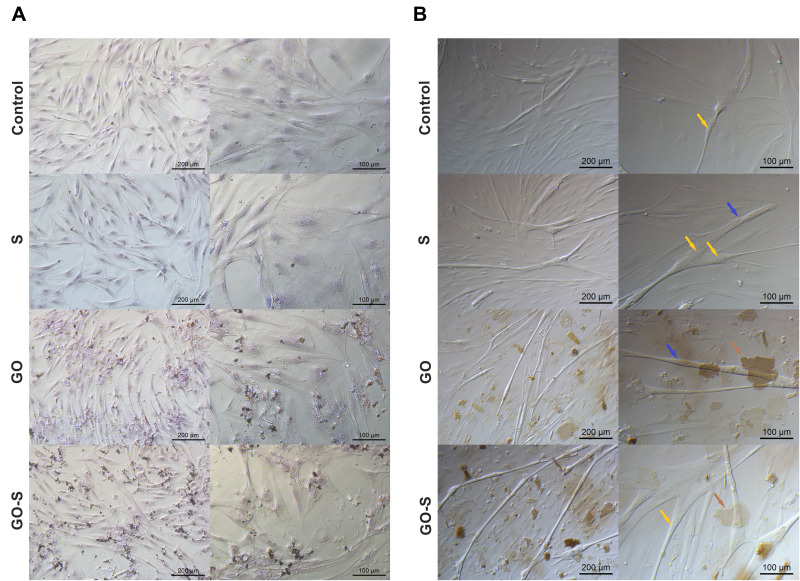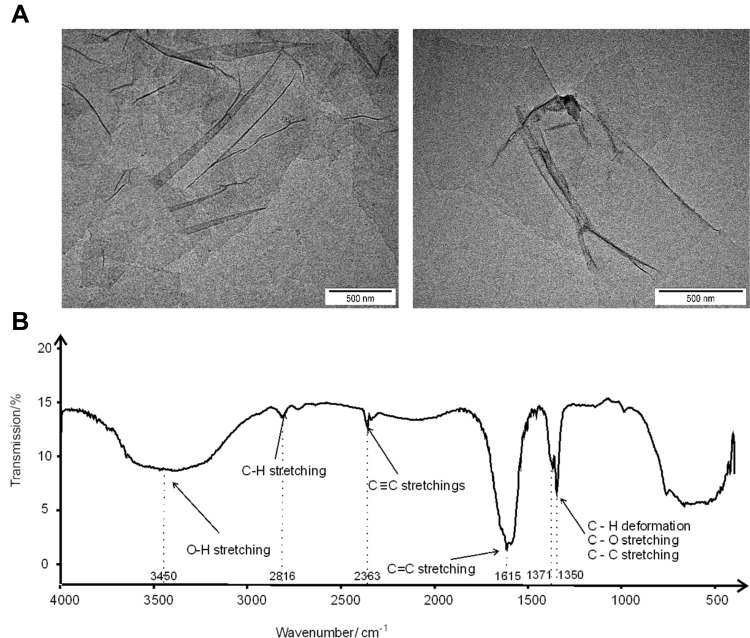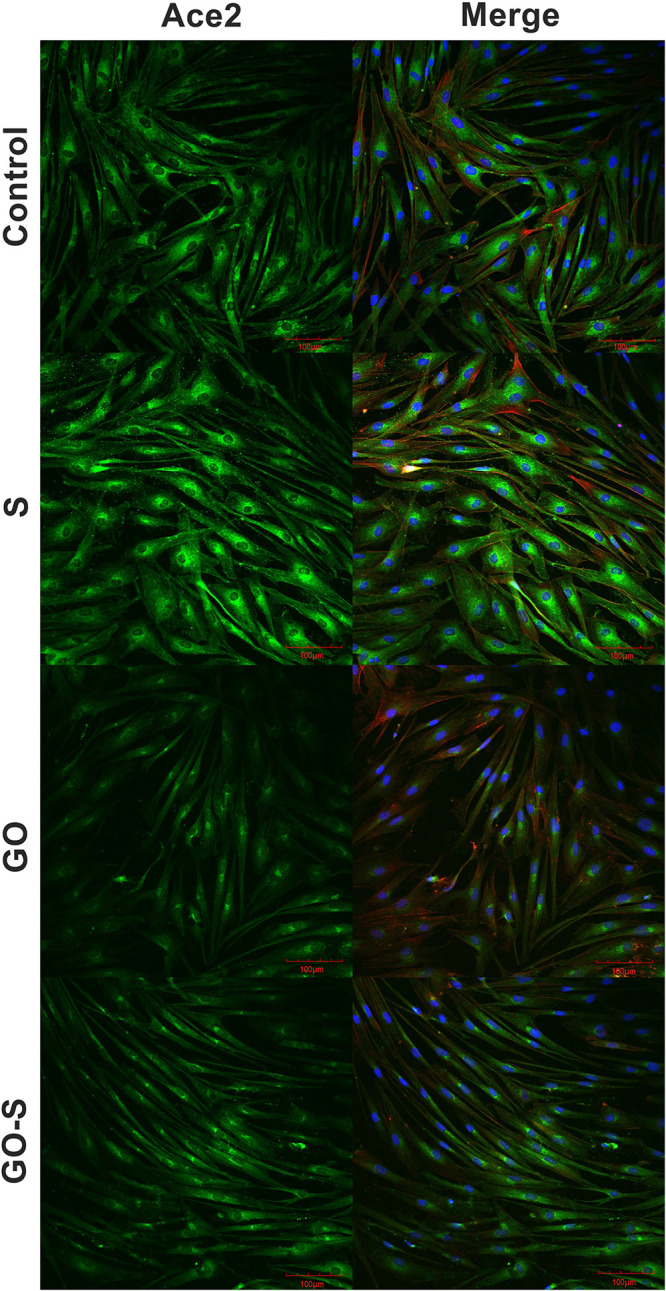Graphene Oxide Decreases Pro-Inflammatory Proteins Production in Skeletal Muscle Cells Exposed to SARS-CoV-2 Spike Protein.
IF 2.4
Q2 NANOSCIENCE & NANOTECHNOLOGY
引用次数: 0
Abstract
Aim The experiments aimed to document the presence of the ACE2 receptor on human muscle cells and the effects of the interaction of these cells with the spike protein of the SARS-CoV-2 virus in terms of induction of pro-inflammatory proteins, as well as to assess the possibility of reducing the pool of these proteins with the use of graphene oxide (GO) flakes. Methods Human Skeletal Myoblast (HSkM), purchased from Gibco were maintained in standard condition according to the manufacturer’s instruction. The cells were divided into 4 groups; 1. C-control, 2. S-with addition of spike protein, 3. GO-with the addition of graphene oxide, 4. GO-S-with addition of GO followed by the addition of S protein. Protein S (PX-COV-P049) was purchased from ProteoGenix (France). GO was obtained from Advanced Graphene Products (Zielona Gora, Poland). The influence of all the factors on the morphology of cells was investigated using light and confocal microscopy. ACE2 protein expression on muscle cells was visualized and 40 pro-inflammatory cytokines were investigated using the membrane antibody array method. The protein profile of the lysate of cells from individual groups was also analyzed by mass spectrometry. Conclusion The experiments confirmed the presence of the ACE2 receptor in human skeletal muscle cells. It has also been documented that the SARS-CoV-2 virus spike protein influences the activation of selected pro-inflammatory proteins that promote cytokine storm and oxidative stress in muscle cells. The use of low levels of graphene oxide does not adversely affect muscle cells, reducing the levels of most proteins, including pro-inflammatory proteins. It can be assumed that GO may support anti-inflammatory therapy in muscles by scavenging proteins that activate cytokine storm.



氧化石墨烯减少暴露于SARS-CoV-2刺突蛋白的骨骼肌细胞中促炎蛋白的产生
目的:本实验旨在记录ACE2受体在人体肌肉细胞上的存在,以及这些细胞与SARS-CoV-2病毒刺突蛋白相互作用在诱导促炎蛋白方面的影响,并评估使用氧化石墨烯(GO)薄片减少这些蛋白池的可能性。方法:从Gibco购买的人骨骼肌母细胞(HSkM)按说明书保持在标准状态。将细胞分为4组;1. C-control 2。s -加入刺突蛋白,3。氧化石墨烯-添加氧化石墨烯,4。GO-S-先加入GO,再加入S蛋白。蛋白S (PX-COV-P049)购于法国ProteoGenix公司。氧化石墨烯是由先进石墨烯产品公司(波兰Zielona Gora)获得的。利用光镜和共聚焦显微镜观察各因素对细胞形态的影响。采用膜抗体阵列法观察肌肉细胞中ACE2蛋白的表达,并检测40种促炎因子的表达。用质谱法分析各组细胞裂解液的蛋白质谱。结论:实验证实了ACE2受体在人体骨骼肌细胞中存在。也有文献表明,SARS-CoV-2病毒刺突蛋白会影响某些促炎蛋白的激活,这些促炎蛋白会促进肌肉细胞中的细胞因子风暴和氧化应激。使用低水平的氧化石墨烯不会对肌肉细胞产生不利影响,会降低大多数蛋白质的水平,包括促炎蛋白。可以假设氧化石墨烯可能通过清除激活细胞因子风暴的蛋白质来支持肌肉的抗炎治疗。
本文章由计算机程序翻译,如有差异,请以英文原文为准。
求助全文
约1分钟内获得全文
求助全文
来源期刊

Nanotechnology, Science and Applications
NANOSCIENCE & NANOTECHNOLOGY-
CiteScore
11.70
自引率
0.00%
发文量
3
审稿时长
16 weeks
期刊介绍:
Nanotechnology, Science and Applications is an international, peer-reviewed, Open Access journal that focuses on the science of nanotechnology in a wide range of industrial and academic applications. The journal is characterized by the rapid reporting of reviews, original research, and application studies across all sectors, including engineering, optics, bio-medicine, cosmetics, textiles, resource sustainability and science. Applied research into nano-materials, particles, nano-structures and fabrication, diagnostics and analytics, drug delivery and toxicology constitute the primary direction of the journal.
 求助内容:
求助内容: 应助结果提醒方式:
应助结果提醒方式:


